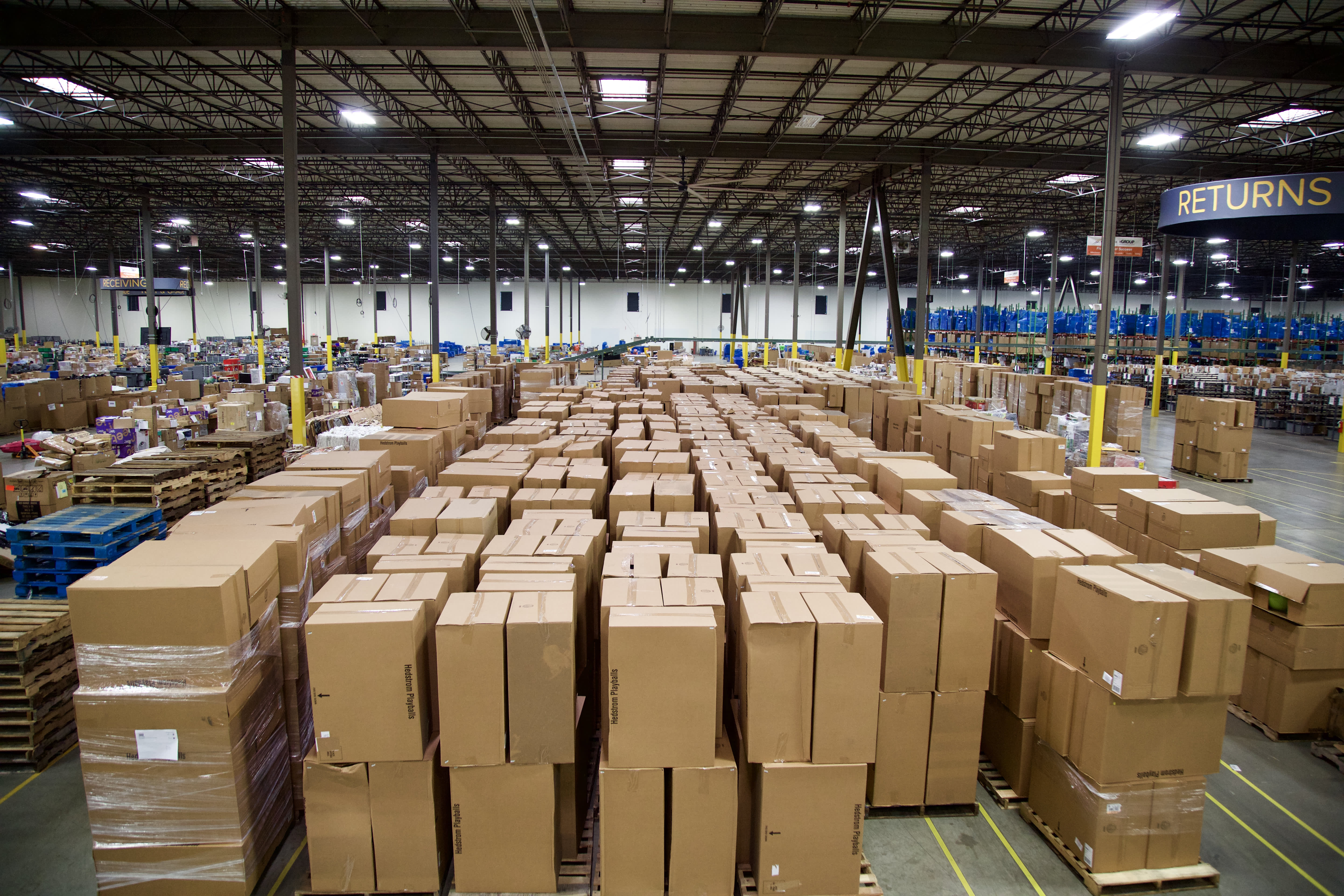With online sales proliferating during the coronavirus pandemic, the U.S. is going to need more warehouses to store hoards of boxes and handle those orders.
Holed up at home, and with many bricks-and-mortar stores temporarily shut, shoppers have turned to their computers and smartphones to buy everything from fresh groceries to new home furnishings to pet toys. And even after the pandemic subsides, the trend of people buying more and more online is expected to stick around.
And so with more people clicking “buy” instead of venturing to the mall, demand for industrial real estate could reach an additional 1 billion square feet by 2025, according to a new report from JLL.
The commercial real estate services firm said that prior to the Covid-19 crisis, about 35% of its industrial leasing activity was related to e-commerce. But now, it said, as much as 50% of that leasing activity has already been tied to the online retail industry in 2020.
“The first quarter was our largest leasing quarter in three years,” said Craig Meyer, president of JLL’s Americas industrial division. “We’re seeing more pressure on [e-commerce companies] than the typical holiday season … to meet consumer demand.”
He explained a recent situation where a retail-related company requested a lease on a 1.2 million-square-foot warehouse space in Delaware about 30 days ago, and moved in almost immediately to begin fulfilling orders for fresh items. Part of the warehouse included a cold-storage component, for foods that need to be kept refrigerated, Meyer explained.
“That is unheard of,” he said. “The lease was signed and they moved in in less than 30 days.” Typically, deals will span the course of nine months, from signing a lease to moving in, according to Meyer.
JLL is projecting the U.S. needs another 100 million square feet of cold-storage facilities just to keep up with consumer demand and sales trends.
To put into perspective how much extra warehouse space is needed, Prologis, a real estate investment trust that is also Amazon‘s largest landlord, has estimated that e-commerce companies require 1.2 million square feet of distribution space for each $1 billion in sales.
The firm eMarketer, meantime, is predicting U.S. e-commerce sales will make up about 14.5% of total retail sales, or $709.78 billion, this year. By the end of 2024 that percentage will grow to 18.1% of all retail sales, with online sales surpassing $1 trillion for the first time, it said.
Industrial real estate the “darling” of the commercial real estate industry today, Meyer said.
The sector certainly has a brighter outlook than some of its peers — including office, retail and hotel space, where vacancies are increasingly growing and fewer new deals are being done.
In retail specifically, store closures are piling up and are on track to break a record this year, pressuring landlords to find new uses for emptied spaces. Rents are also under pressure, as companies looking to keep their stores open are working to renegotiate deals, hoping to leverage the market’s disarray in their favor. Former department store executive Jan Kniffen has predicted a third of America’s malls will vanish by 2021. This could also deal a blow to the towns that depend on their malls for tax purposes.
Warehouses could be one solution, since supply is harder to come by.
In some instances, dead malls have already been converted into sprawling logistics hubs. In Memphis, Tennessee, for instance, a shuttered Sam’s Club store is now home to a Sam’s Club e-commerce fulfillment center.
Still, there are hurdles in taking a former retail space and turning it into something else, Meyer cautioned.
“There are things like zoning laws, these are residential areas,” he said. “There’s going to be a lot more involved with imagining these things.”

